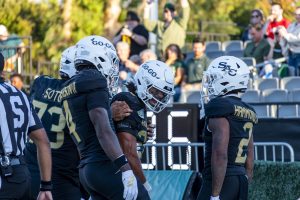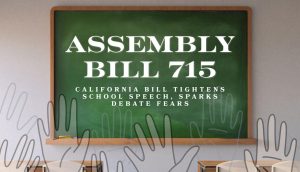Beyond the tan
September 24, 2014
Fall is here, but that cloudy weather does not mean it is time to stash the summer sunscreen.
Thomas Leveritt’s three minute video “How the Sun Sees You” capitalized with over 13 million views on YouTube, and forced many to rethink the sunblock.
The video candidly filmed several people through ultraviolet lenses, showing ultraviolet light and potential sun damage on the skin.
Results were jaw-dropping. Beautiful women with seemingly flawless complexions turned into something from a Stephen King novel. Unseen freckles and large, dark splotches covered the women’s faces until they were no longer recognizable.
Men, too, were filmed and their faces showed the same unseen damage under the ultraviolet lenses—invisible freckles and deep lines.
The older the person, the more damage was seen. Some faces appeared so tanned and cracked that the skin almost looked charred in front of the ultraviolet camera.
But not all skin looked this way.
One minute into the video, text pulsed through a black screen: “Everyone’s born with good skin—pretty much.” The next shot was a baby smiling—flawless skin under the ultraviolet camera.
The last minute of the video showed the effects of sunscreen under the ultraviolet lenses.
Sunblock lived up to its name. It went on thick and black in front of the camera. Even completely rubbed in, it formed a solid layer blocking the ultraviolet light in front of the camera.
Skin cancer is the most common form of cancer in the United States, according to the Skin Cancer Foundation, and over two million people are diagnosed annually.
That is a huge number for something so easily protected by applying some sunscreen.
According to Kaiser Permanente, daily use of sunscreen is advised even during the cloudy weather of fall.
Kaiser urges people to stay out of the sun (period), but for athletes and sun lovers, that is just not possible.
Because staying indoors is not an option for many, Kaiser suggests using products with zinc oxide. This type of sunblock does not rub in clear, but it does block sunlight from reaching the skin.
Surfers are best known for smearing the white cream on their noses, but other outdoor sports could benefit from zinc because it won’t melt off during sweat sessions and blazing heat. In any case, a dab on the nose and cheeks looks better than sun damage.
Kyle Moses plays outfield for Sacramento State baseball and said sunscreen is a must when going out on the field.
“I do absolutely use [sunscreen],” Moses said. “If I don’t use it my lips get all chapped, my arms and legs burn. It’s a long season, so the sun can really wear you down.
Moses said the field gets pretty hot with the lack of shade and the sun beating down is a recipe for a pretty bad sunburn without protection.
“[Sunscreen] is kind of a lifesaver to be honest with you,” Moses said.
Whether you are on the field, or going for a run on campus, sunscreen is a must in any weather. Dab it on and don’t become another skin cancer statistic.
























































































































